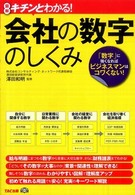Full Description
Through the familiar and motivating metaphor of sports, Janet Elder (Entryways, New Worlds, Opening Doors) provides students extensive opportunities to learn, apply, and reinforce essential reading skills.
Contents
To the InstructorIntroduction The "Secrets" of SuccessA User's Guide to the BrainHandle Textbooks and Textbook Assignments Like a Pro PART ONE: WARM-UPChapter 1: Determine the Meaning of an Unfamiliar Word through ContextThe Skill: Determine the Meaning of an Unfamiliar Word by Using the ContextThe Technique: Use Five Types of Context CluesThe Trainer: Applying the Skill of Using Context CluesThe Edge: Pointers about Using Context CluesThe Replay: Remember the Essential Information from the ChapterThe Practice: Apply the Skill of Using Context CluesThree Sets of Practice ExercisesChapter 2: Analyze Word StructureThe Skill: Analyze Word StructureThe Technique: Use Prefixes, Roots, and Suffixes to Unlock Word MeaningsThe Trainer: Applying the Skill of Analyzing Word StructureThe Edge: Pointers about Analyzing Word StructureThe Replay: Remember the Essential Information from the ChapterThe Practice: Apply the Skill of Analyzing Word StructureThree Sets of Practice ExercisesPART TWO: BASIC WORKOUTChapter 3: Determine the Topic of a ParagraphThe Skill: Determine the Topic of a ParagraphThe Technique: Use the Four Clues to the TopicThe Trainer: Applying the Skill of Determining the Topic of a ParagraphThe Edge: Pointers about Determining the Topic of a ParagraphThe Replay: Remember the Essential Information from the ChapterThe Practice: Apply the Skill of Determining the Topic of a ParagraphThree Sets of Practice ExercisesChapter 4: Identify the Stated Main Idea Sentence and the Supporting Details of a ParagraphThe Skill: Identify Stated Main IdeasThe Technique: Find the Sentence that Has the Characteristics of a Main Idea SentenceThe Trainer: Applying the Skill of Identifying Stated Main IdeasThe Edge: Pointers about Identifying Stated Main IdeasThe Replay: Remember the Essential Information from the Chapter (Stated Main Idea)The Skill: Identify the Supporting Details of a ParagraphThe Technique: Identify Supporting DetailsThe Trainer: Applying the Skill of Identifying Supporting DetailsThe Edge: Pointers about Identifying Supporting DetailsThe Replay: Remember the Essential Information from the Chapter (Supporting Details)The Practice: Apply the Skill of Identifying Stated Main IdeasThree Sets of Practice ExercisesChapter 5: Formulate the Implied Main Idea Sentence of a ParagraphThe Skill: Formulate the Implied Main Idea Sentence of a ParagraphThe Technique: Use the Three Formulas for Formulating an Implied Main IdeaThe Trainer: Applying the Skill of Formulating an Implied Main IdeaThe Edge: Pointers about Formulating an Implied Main IdeaThe Replay: Remember the Essential Information from the ChapterTransition Words, Metacognition, and Relationships Within and Between SentencesThe Practice: Apply the Skill of Formulating an Implied Main IdeaThree Sets of Practice ExercisesChapter 6: Recognize Authors' Writing PatternsThe Skill: Recognize Authors' Writing PatternsThe Technique: Learn the Characteristics of Authors' Writing PatternsThe Trainer: Applying the Skill of Recognizing Authors' Writing PatternsThe Edge: Pointers about Recognizing Authors' Writing PatternsThe Replay: Remember the Essential Information from the ChapterThe Practice: Apply the Skill of Recognizing Authors' Writing PatternsThree Sets of Practice ExercisesPART THREE: BASIC STRETCHINGChapter 7: Apply All the Basic Skills to ParagraphsThe Practice: Apply All the Basic Skills to ParagraphsThree Sets of Practice ExercisesPART FOUR: ADVANCED WORKOUTChapter 8: Distinguish Facts from OpinionsThe Skill: Distinguish Facts from OpinionsThe Technique: Apply the Characteristics of Facts and OpinionsThe Trainer: Applying the Skill of Distinguishing Facts from OpinionsThe Edge: Pointers about Distinguishing Facts from OpinionsThe Replay: Remember the Essential Information from the ChapterThe Practice: Apply the Skill of Distinguishing Facts from OpinionsThree Sets of Practice ExercisesChapter 9: Make Inferences and Draw ConclusionsThe Skill: Make Inferences and Draw ConclusionsThe Technique: Base Inferences and Conclusions on the PassageThe Trainer: Applying the Skill of Making Inferences and Drawing ConclusionsThe Edge: Pointers about Making Inferences and Drawing ConclusionsThe Replay: Remember the Essential Information from the ChapterThe Practice: Apply the Skill of Making Inferences and Drawing ConclusionsThree Sets of Practice ExercisesBonus ItemsChapter 10: Determine an Author's Purpose, Tone, Point of View, and Intended AudienceThe Skill: Determine an Author's Purpose, Tone, Point of View, and Intended AudienceThe Technique: Ask the Purpose, Tone, Point of View, and Intended Audience QuestionsThe Trainer: Applying the Skills of Determining an Author's Purpose, Tone, Point of View, and Intended AudienceThe Edge: Pointers about Determining an Author's Purpose, Tone, Point of View, and Intended AudienceThe Replay: Remember the Essential Information from the ChapterThe Practice: Apply the Skill of Determining an Author's Purpose, Tone, Point of View, and Intended AudienceThree Sets of Practice ExercisesChapter 11: Evaluate an Author's ArgumentThe Skill: Evaluate an Author's ArgumentThe Technique: Identify the Issue and the Author's Argument, Then Ask the Evaluation QuestionsThe Trainer: Applying the Skill of Evaluating an Author's ArgumentThe Edge: Pointers about Evaluating an Author's ArgumentThe Replay: Remember the Essential Information from the ChapterThe Practice: Apply the Skill of Evaluating an Author's ArgumentThree Sets of Practice ExercisesPART FIVE: ADVANCED STRETCHINGChapter 12: Apply All the Advanced Skills to Single- and Multiple-Paragraph Selections The Practice: Apply All the Advanced Skills to ParagraphsThree Sets of Practice ExercisesPART SIX: COOLDOWNChapter 13: Interpret Graphic AidsThe Skill: Interpret Graphic AidsThe Technique: Interpret Bar Graphs, Line Graphs, Pie charts, Flowcharts, and TablesThe Trainer: Applying the Skill of Interpreting Graphic AidsThe Edge: Pointers about Interpreting Graphic AidsThe Replay: Remember the Essential Information from the ChapterThe Practice: Apply the Skill of Interpreting Graphic AidsThree Sets of Practice ExercisesChapter 14: Organize Information for StudyThe Skill: Organize Information for StudyThe Technique: Mark and Annotate Textbooks, Take Notes, Make Outlines and Study Maps, and Write SummariesThe Trainer: Applying the Skill of Organizing Information for StudyThe Edge: Pointers about Organizing Information for StudyThe Replay: Remember the Essential Information from the ChapterThe Practice: Apply the Skill of Organizing Information for StudyThree Sets of Practice ExercisesChapter 15: Apply All the Skills You Have LearnedReading Selections:Selection 1: "Threats to Computer Security" (Computer Science)Selection 2: "Achieving What You Really Want in Life" (Personal Success)Selection 3: "The Stem Cell Controversy" (Biology/Ethics)Selection 4: "Burglars and Burglary, Robbers and Robbery, and Hot Products" (Criminology)Selection 5: "Repressed Memories: Truth or Fiction?" (Psychology)Selection 6: "Do You Know What Video Games Your Children Are Playing?" (Psychology/Popular Culture)Selection 7: "Reality Bytes: Eight Myths about Video Games Debunked" (Psychology/Popular Culture)Selection 8: "Summer Vacation of Our Discontent" (Education)Selection 9: "Adulthood: Baby Boomers and Generation Xers" (Human Development)Selection 10: "A Strategy for Managing Cash" (Personal Finance)Selection 11: "Legal Rights of Gays and Lesbians" (Political Science)Selection 12: "Terrorism and Political Geography" (Geography)Kudos to You from Your Coach!Appendixes Appendix 1: List of Word Parts Appendix 2: Test-takingAppendix 3: Recognizing Propaganda and FallaciesAppendix 4: Conducting Research Using the Internet and Evaluating WebsitesAppendix 5: Learning Style Tips Appendix 6: Four Common Figures of SpeechPhoto Credits IndexNER(01): WOW







